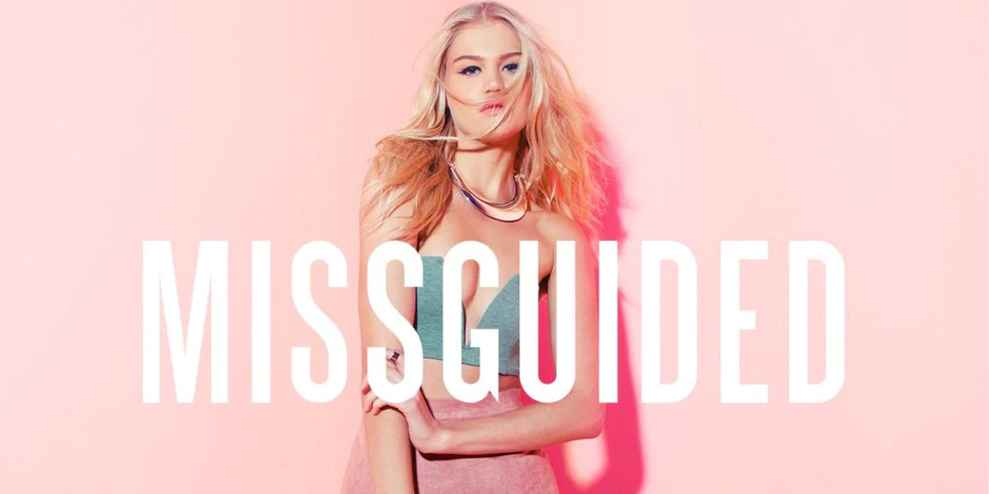Missguided invests heavily in influencer marketing. In fact, it takes the lion’s share of its annual ad budget. Now it’s doubling down on its reliance on content creators, believing they can take the place of ad agencies to manage everything from campaign ideation to production and distribution.
Like many fashion brands, when Covid hit and shuttered high streets Missguided’s online sales spiked. In the year to March 29 2020, the brand’s turnover rose 8% to £202m. According to Drapers, between April and November 2020 sales were up 45% while the brand acquired 1.9 million new active customers since the start of its 2020/21 financial year.
In response, its marketing priorities also changed. “We stepped away from traditional media in 2019,” says Vicky James, its head of brand marketing.
“We’ve been actively working with influencers for a number of years, but it has definitely accelerated in the past two years with Covid and changing habits for how people are shopping, as well as the agility of influencers to really turn things around when we need.”
Influencer marketing now takes the highest percentage of Missguided’s advertising spend, more than TV or out-of-home when it chalks up activity across the year.
James continues: “We can be so much more agile with what we do through influencer marketing and it’s something that is to a degree measurable. We can actually show the true value of that channel versus a video-on-demand campaign where we can’t measure direct sales.”
In that regard, YouTube is where it’s seeing the best performance.
“It gives us the traffic and the sales we can measure trough tracked links. We see good sales within the first day of an influencer ad going live but still see it performing weeks after. That’s our biggest platform for ROI. The content, though, is a higher investment for the creators and producers, but we do see the biggest return.”
Second to that is Instagram, where it works with platforms like LTK – a global influencer platform recently valued at $2bn that allows influencers to link to products via their on social platforms, blogs and ‘LTK Creator Shops’ – to measure through tracked links in its Stories function as well as in-bio.
“The downside is that so many brands now are using paid social there, so you do get lost and we have seen a dip in engagement,“ says James, suggesting that other platforms such as TikTok and Pinterest – which recently announced its own Creators program to encourage more influencers on to the site – are instead edging up the priority list.
Over the past year, it has also learned the value for money influencers bring to the table. The content they develop for YouTube or Instgram is then used by Missguided across its website and emails and in its paid-social.
“We’re saving on the creative spend,” says James, explaining that it’s increasingly relying on infleuncers – rather than traditional ad agencies – for the full end-to-end ad campaign, using them for everything from ideation through to creation of assets.
“What we’re talking about now is how we utilize creators, or groups of creators, to do that campaign production hand-in-hand with us. There’s definitely a move away from these ad campaigns from agencies, especially for an industry like ours where we produce new stock every week and can’t wait eight weeks for an ad campaign. We need to be more nimble and agile.“
This is especially true in the face of the current supply chain crisis, which has hit Missguided hard. According to The Times, its boss Nitin Passi has been on the hunt for emergency funding to help it overcome the problems faced from surging shipping costs and the labor shortages that have prevented it from sourcing stock in tight timeframes.
Instead of splurging budget on glossy ad campaigns that might feature products later hit by supply chain issues, influencer marketing is giving Missguided greater flexibility to promote what it has when it has it.
“If we can produce campaigns with creators every two weeks or monthly where they’re getting that key product message out, that’s saving on the creative cost of sending a team out to shoot on location. There’s just not a need to do that. We’re looking to utilize creators more to produce those assets.
“It allows us to have a different point of view and, ultimately, then we don’t have a need to have a creative team or agency.”
…
This article first appeared in www.thedrum.com
Seeking to build and grow your brand using the force of consumer insight, strategic foresight, creative disruption and technology prowess? Talk to us at +971 50 6254340 or mail: engage@groupisd.com or visit www.groupisd.com/story




